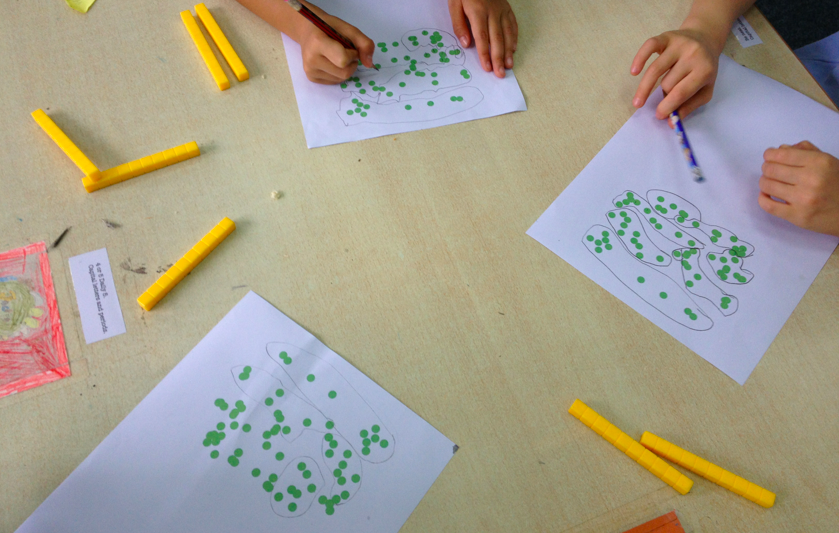Ultrasonic Sensors & Graph Matching: Play, then learn
In my physics class this morning, the plan was to have students work through a packet of descriptions of constant velocity motion. Each description was either a position vs. time graph, a velocity vs. time graph, or a motion map. Students would then sketch the corresponding velocity/position graphs, and then actually act out these scenarios in front of an ultrasonic detector. With a live graph showing them what their position vs. time graphs were as they moved, mayhem invariably would result.
I had a last minute change to my plan this morning. Following the ideal set out by one of my favorite books as a kid and my favorite museum (the Exploratorium), I asked ‘how can we play with this?’
I had the sensor ready to go at the start of class. I told a student to walk back and forth in front of it while data was collected. I didn’t have to give any other instruction – they saw how their movement resulted in a graph.
I then put two post-it notes on the screen and told another student to make the graph hit them both:
This was probably the first time since the first day of school that the class was all smiles.
After they had this figured out, I gave them another task: hit the post-it notes, but also make the graph go along a string taped to the wall:
This took a bit more time for developing intuition, but they got this down.
It was only at this point when I introduced the packet of scenarios. They went right to work and sped their way through, helping each other when differences arose.
My usual assessment activity for this has always been that I could call each student up to generate a specific graph. Since they don’t know who I’m going to call until the last minute, they ideally would work to understand how to generate each graph in front of the detector so that they were ready in case I called them up.
A student this morning said point blank that this plan did not sound fun at all. When I thought about it a bit more, I realized it was a fear based activity. The student instead suggested that I call each of them up, and give a number for a graph that needed to be generated, and the rest of the class could guess which one it was.
Clearly a superior idea. We proceeded to run the activity this way, and it was a blast.
I’m not sure why I haven’t done this activity this way in the past. It’s obviously superior to almost anything else for a number of reasons.
- The activity starts with no numbers, just intuition and feedback. It’s fun seeing your own movement be simultaneously measured and displayed in front of you. The need to communicate about the process is where the vocabulary and numerical measurement comes in – that’s a perfect place for a teacher to step in once students are digging the activity.
- The idea of setting an origin and detailing the meaning for increasing or decreasing position values isn’t necessary here. Students figure out quickly how these relate to their own movement without any intervention on my part.
- Any activity that gets teenagers out of their seats and moving around during the first block of the day (and does so in a way that also directly serves the learning goals of a lesson) is going to be vastly superior to pretty much everything.
A great way to open a rainy Wednesday in Hangzhou, by any measure.


















